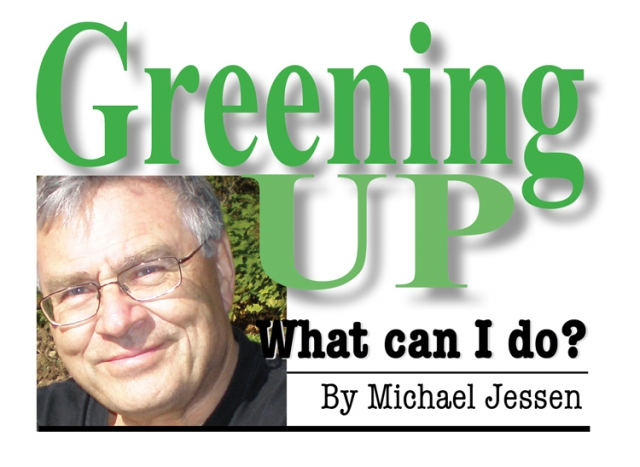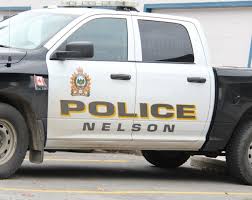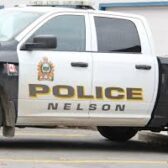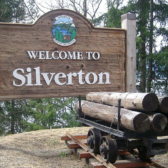Spring goes up in smoke
By Michael Jessen
They go together like two peas in a pod – a sunny spring day and smoke.
The sunny spring day is a gift of nature. The smoke is an obstruction from an errant backyard brush fire – errant as in straying from the right course or accepted standards.
“What do you mean?” asks the man who set fire to a pile of autumn leaves and winter windfall. “I used to watch my father light lots of backyard fires.”
“That was then,” you reply. “Hopefully, a new generation has learned how dangerous such fires are.”
“Come on,” the man drawls. “How dangerous can a little fire be?”
“According to NASA’s Earth Observatory burning vegetation releases large amounts of solid carbon combustion particles and gases, including greenhouse gases that help warm the Earth,” you reply.
“You mean my little fire contributes to global warming?” the man snarls. “I read on the Internet that rotting or burning leaves give off the same amount of carbon dioxide.”
“That’s disputed by both the United Nations and the US Environmental Protection Agency,” you reply. “The Food and Agriculture Organization of the United Nations says the instantaneous combustion products of burning vegetation include carbon dioxide, carbon monoxide, methane, non-methane hydrocarbons, nitric oxide, methyl chloride, and various particulates.”
Same Chemicals as Cigarette Smoke
“Aren’t those some of the same chemicals in cigarette smoke that contribute to lung cancer?” the man asks.
“Yup,” you reply. “The EPA has identified a large number of pollutants including particulate matter, carbon monoxide, benzene, acetone, toluene, ethyl benzene, pinene, naphthalene, phenol, and 14 polycyclic aromatic hydrocarbons in the smoke from burning vegetation.”
“What is particulate matter and why is it a health concern?” the man quizzes.
“The visible smoke from leaf burning is composed of tiny particles that if inhaled can reach the deepest regions of the lung and remain there for months or even years,” you reply. “Breathing particulate matter can increase the chances of respiratory infection, reduce the volume of air inhaled and impair the lungs’ ability to use that air. Particulate matter can also trigger asthma attacks in some people.”
“What are hydrocarbons and why are they harmful?” the man queries.
“Hydrocarbons are chemicals that can exist as both gases and solid particles,” you reply. “Because backyard vegetation is often moist and burns without proper air circulation, it often burns poorly, producing high levels of hydrocarbons. Some of these hydrocarbons, such as aldehydes and ketones, cause irritation of the eyes, nose, throat, and lungs. A substantial portion of the hydrocarbons in leaf smoke consists of polynuclear aromatic hydrocarbons, some of which are known carcinogens.”
Small Children are Susceptible
“So I guess I shouldn’t allow my son to stand around breathing in that smoke?” the man wonders.
“Right, because carbon monoxide is an invisible gas that results from incomplete combustion, and burning leaf piles are ideal for creating carbon monoxide emissions,” you reply. “Carbon monoxide is absorbed into the bloodstream through the lungs and combines with red blood cells. This reduces the amount of oxygen the red blood cells can absorb and supply to body tissues. Unborn children, newborn infants, small children, smokers, the elderly, people with asthma, and persons with heart and chronic lung disease are more susceptible to carbon monoxide than the general population.”
“Are there any other reasons homeowners should not burn in the backyard?” the man asks.
“Yes,” you reply. “In many communities open burning is illegal because the total health, financial, and environmental costs of burning can be quite high. These costs include higher incidences of health problems and increased health care costs; higher incidences of home and forest fires and associated property loss and need for increased fire protection; and the clean-up costs associated with soiling of personal property.”
Composting Can Solve the Problem
“So what should I do instead of burning?” the man demands.
“Composting is a safe and environmentally sound method of managing leaves and other yard trimmings,” you reply. “Composting involves placing yard trimmings and other organic materials in a pile or bin, maintaining adequate moisture, and turning the pile periodically to mix in air. Microorganisms gradually break down the material into a humus-like product called compost that is beneficial to gardens and lawns.”
“I guess if I stop burning more people will be able to enjoy sunny spring days,” the man ponders.
“You’re absolutely right about that,” you reply.
Resources
See a NASA page on biomass burning at http://earthobservatory.nasa.gov/Features/BiomassBurning/
The EPA’s alternatives to open burning page is at http://www.epa.gov/ttn/atw/burn/burnpg.html
You’ll find Environment Canada’s compost page at http://www.ec.gc.ca/education/default.asp?lang=En&n=BAE2878A-1
Find out all about composting from the Composting Council of Canada at http://www.compost.org/AboutComposting.html
Michael Jessen is a Nelson eco-writer who has published more than 800 articles about waste reduction, climate change, and sustainability. He can be reached by e-mail at zerowaste@shaw.ca


























